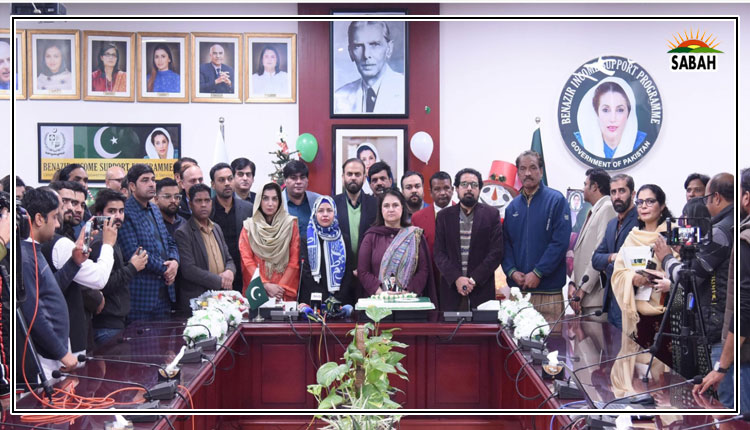Education: A Key to Breaking Gender Stereotypes By Iqra Afzal [Student of mphil (Sociology), University of Sargodha]
In a classroom in rural Pakistan, a young girl raises her hand to answer a math question. She dreams of becoming a scientist, but society has other plans for her. “Girls belong in the kitchen,” she’s often told. Stories like hers are all too common, not just in Pakistan but worldwide. Gender norms—society’s unspoken rules about what men and women can or cannot do—continue to hold millions back.
Education, however, is rewriting this narrative. Across the globe, schools are becoming battlegrounds for change, challenging stereotypes and empowering students to imagine a world where opportunities aren’t dictated by gender.
The Power of Education
Education is more than just textbooks and exams—it shapes the way we think and see the world. In Pakistan, where cultural norms often prioritize boys’ education, schools have the power to challenge deeply held beliefs.
Globally, examples abound:
Sweden’s Gender-Neutral Schools encourage children to explore all roles, from cooking to construction, breaking stereotypes before they take root.
Rwanda’s STEM Programs have shown that targeted efforts to include girls in science and technology can dismantle long-standing biases about women in technical fields.
India’s Beti Bachao Beti Padhao Campaign combines financial incentives and community engagement to keep girls in school, leading to a significant rise in female enrollment.
In Pakistan, similar programs are beginning to make an impact. The Malala Fund, named after Nobel laureate Malala Yousafzai, has championed girls’ education in areas where conflict and cultural resistance pose significant barriers.
Barriers at Home
Despite these efforts, challenges remain. In many families, educating boys is seen as an investment, while girls are expected to stay home and help with household chores. Parents worry that sending daughters to school might expose them to “modern ideas” that conflict with traditional roles.
Even when families support education, infrastructure is often a hurdle. In rural Pakistan, schools are far away, unsafe, or lack basic facilities like separate bathrooms for girls. Without safe transport, many families are reluctant to let their daughters attend.
The economic burden also weighs heavily. When money is tight, boys’ education is prioritized, and girls are left behind.
Sparks of Change
Change, however, is on the horizon. Initiatives like Punjab’s Zewar-e-Taleem program, which offers financial incentives to families sending girls to school, have shown promise. The Bus Rapid Transit (BRT) system in Peshawar has made it safer for women and girls to travel to schools and colleges.
Community efforts are also making a difference. In Bangladesh, campaigns led by local leaders increased girls’ enrollment by 40%. Similar approaches in parts of Pakistan are beginning to shift mindsets, showing parents the long-term benefits of educating daughters.
A Global Perspective
Pakistan isn’t alone in this fight. Around the world, education is being used to challenge gender norms in innovative ways:
In Sweden, children learn about equality through gender-neutral language and activities.
In Kenya, scholarships and mentoring programs for girls have improved school retention rates.
In Finland, inclusive curriculums highlight the achievements of women in history, science, and politics.
These examples prove that with the right policies and community support, education can transform societies.
Why This Matters
When girls are educated, everyone benefits. Studies show that educated women are more likely to join the workforce, delay marriage, and invest in their children’s education. This ripple effect boosts economies, improves health outcomes, and fosters social harmony.
The World Bank estimates that achieving gender equality in education could add $12 trillion to the global economy. In Pakistan, where women make up only 22% of the workforce, empowering girls through education is an untapped opportunity.
The Road Ahead
So, what needs to be done?
Expand Access: Build more schools in rural areas, especially girls-only institutions, and ensure they have proper facilities.
Involve Communities: Engage parents, religious leaders, and local influencers to promote the value of girls’ education.
Leverage Technology: Use e-learning platforms to reach remote areas where schools are scarce.
Monitor Progress: Regularly track enrollment and dropout rates to ensure programs are working.
A Vision for the Future
Imagine a Pakistan where every girl has the chance to learn, dream, and achieve. Where classrooms are filled with future scientists, engineers, and leaders, regardless of gender. This vision is within reach—but only if education becomes a priority for all.
By investing in schools, empowering teachers, and engaging communities, Pakistan can break free from the constraints of gender norms and build a brighter, more inclusive future.











